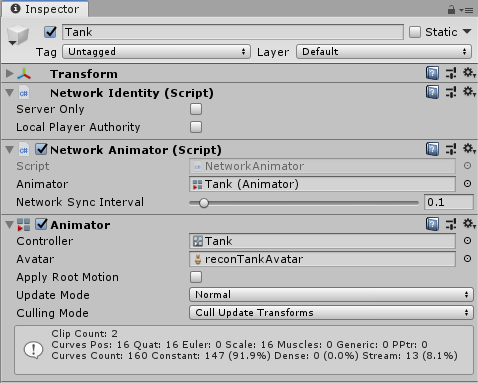mirror of
https://github.com/MirrorNetworking/Mirror.git
synced 2024-11-18 19:10:32 +00:00
* Moved doc files to docfx folder * load csproj * doc generation * Run docfx * Add docfx * Deploy docs to mirror-networking.com * use deploy phase * deploy whole generated site * Fixed the semantic release command * Is last \ required? * show debug log * using lftp for site deploy * Testing lftp * Show current folder * try -e command option * Show me the files * use plain ftp * use choco install instead of cinst * fix ssl certificate validation * fix username * Upload site to xmldocs folder * no need to archive docs * No need for debug output * Fix file permissions * show me .htaccess * Show me contents * Wipe out folder to fix permissions * Set file permissions * Fix file permissions * complete toc list * Migrated intro page * Remove old docs * Update link to docs * Add link to github * Only update docs for stuff in master * This is a powershell command * Update doc/articles/Concepts/Communications/RemoteActions.md * Update doc/articles/Concepts/VisibilityCustom.md * Update doc/articles/Concepts/Authority.md * Update doc/articles/Concepts/GameObjects/SpawnObjectCustom.md * Update doc/articles/Concepts/Authority.md * Update doc/articles/Classes/SyncVars.md * No need to run semver twice
1.7 KiB
1.7 KiB
NetworkAnimator
The Network Animator component allows you to synchronize animation states for networked objects. It synchronizes state and parameters from an Animator Controller.
Note that if you create a Network Animator component on an empty game object, Mirror also creates a Network Identity component and an Animator component on that game object.
- Animator
Use this field to define the Animator component you want the Network Animator to synchronize with.
Details
The Network Animator ensures the synchronization of game object animation across the network - meaning that all players see the animation happen at the same. There are two kinds of authority for networked animation (see documentation on Network system concepts for more information about authority)):
- If the game object has authority on the client, you should animate it locally on the client that owns the game object. That client sends the animation state information to the server, which broadcasts it to all the other clients. For example, this may be suitable for player characters with client authority.
- If the game object has authority on the server, then you should animate it on the server. The server then sends state information to all clients. This is common for animated game objects that are not related to a specific client, such as scene objects and non-player characters, or server-authoritative clients.
- Animator Triggers are not synced directly. Call
NetworkAdnimator.SetTriggerinstead. A game object with authority can use the SetTrigger function to fire an animation trigger on other clients.
